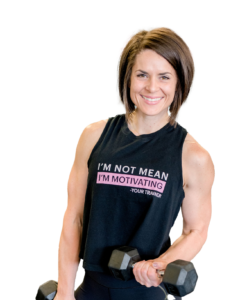As the new year approaches, many of us embark on a journey of self-improvement, especially when it comes to health and fitness. New Year’s resolutions often revolve around getting in shape, losing weight, or adopting a healthier lifestyle. However, setting unrealistic goals can lead to disappointment and abandonment of these aspirations before they even take off.
Instead of aiming for unattainable objectives, it’s crucial to set realistic and achievable goals that pave the way for a successful fitness journey. Here’s a comprehensive guide on how to set realistic New Year’s goals and examples of attainable objectives to consider:
- Be Specific and Measurable: One of the key elements of setting achievable goals is ensuring they are specific and measurable. Vague goals like “getting fit” or “eating healthier” lack specificity, making it difficult to track progress. Instead, specify what “getting fit” means to you. It could be running a 5k, increasing muscle mass, or improving flexibility. For example:
- Specific Goal: “Run a 5k race in under 30 minutes by the end of March.”
- Set Realistic Targets: Consider your current fitness level, lifestyle, and time commitments before setting goals. Unrealistic expectations can lead to burnout and frustration. Make sure your goals are challenging yet achievable. For instance:
- Realistic Goal: “Lose 1-2 pounds per week by following a balanced diet and exercising regularly.”
- Create Short-term Milestones: Break down larger goals into smaller, manageable milestones. This approach helps maintain motivation and allows for a sense of accomplishment along the way. For example:
- Milestone Goal: “Increase daily water intake to eight glasses within the first month.”
- Use the SMART Criteria: Employ the SMART (Specific, Measurable, Achievable, Relevant, Time-bound) criteria when setting goals. This framework ensures your goals are well-defined and within reach. Here’s an example:
- SMART Goal: “Complete three strength training sessions per week for the next three months to increase overall muscle strength.”
- Write Them Down and Visualize: Putting your goals in writing solidifies your commitment. Whether it’s on paper, in a digital document, or through a vision board, the act of writing down goals reinforces accountability and helps in tracking progress. Some find vision boards, which include images and quotes related to their goals, highly motivating.
By setting realistic goals and outlining them effectively, you can pave the way for a successful fitness journey. Remember, consistency and patience are key factors in achieving long-term results.
In summary, here are some practical and achievable fitness goals for the new year:
- Commit to regular workouts: Set a goal to exercise a certain number of times per week.
- Improve flexibility: Aim to touch your toes or perform specific yoga poses.
- Increase daily steps: Set a target number of steps to take each day, gradually increasing it.
- Incorporate more fruits and vegetables into your diet: Set a goal to add a certain number of servings per day or week.
- Reduce sugar intake: Limit sugary snacks or beverages to specific occasions.
As you gear up for the new year, use these tips to set realistic fitness goals that align with your lifestyle, making your journey towards a healthier you more achievable and enjoyable. Cheers to a fit and fabulous year ahead!




